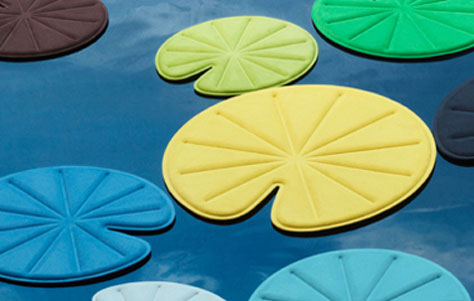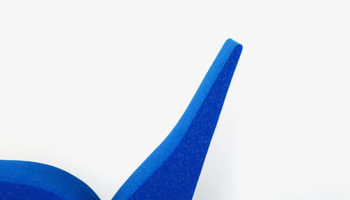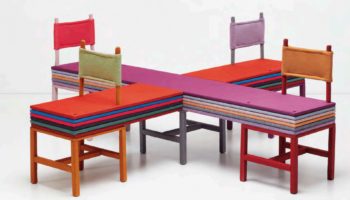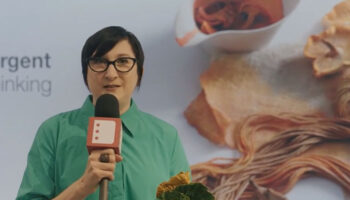New from imm Cologne 2011: Kvadrat’s Waterborn Microfiber
To get through the entire section of textiles, curtains, upholstery, and carpeting at imm Cologne 2011, it is recommended that you touch your way through. Literally. But in case attending wasn’t possible this year, one of the upholstery fan favorites is the latest in sustainable microfibers known as Waterborn. Designed by Aggebo & Henriksen for the stellar manufacturing in Denmark that we know as Kvadrat, this textile makes little impact on the environment compared to conventional microfiber fabrics.
Waterborn. Designed by Aggebo & Henriksen for imm Cologne 2011.
Made using nothing but pure microfibres without a woven core, the Waterborn collection is ultra soft, easy to mold around furniture, and when embossed, it performs at an exceptional level. All fantastic qualities in a supple microfiber, this product takes it to an environmentally-friendly level by not relying upon a solvent that extracts polyurethane. Instead, it is employs water in place of the solvent that recycles warm water in a closed system. The end result – when compared to conventional microfiber production – consumes 70% less water and generates 35% less CO2.
“Sporty and luxurious” are two words Kvadrat uses to describe the material that is made from a combination of polyester and polyurethane. Using a high polyester count, the slim textile and its very short pile finish any upholstering job with an extremely smooth, even surface. Durable too, it can be washed at 60ºC to clean the wear and stains without weakening the fabric. In addition, Waterborn “delivers benchmark embossing performance, offering patterns and shapes that stand out as clear and precise,” says Kvadrat proudly of their new product, adding that “where a pattern is embossed, the surface is shiny, where not, it is matt and unaffected by the process.”
Waterborn is available in 39 classic and contemporary colours that Aggebo & Henriksen explain are based on images found “by probing deeply into the motives of major cities” to create a series of bright, urban shades “almost monochromatic surface colours”.





Leave a Reply